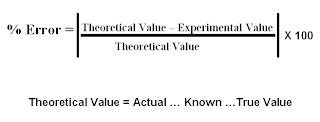Electron distribution mnemonics
-The orbital names s, p, d, and f stand for names given to groups of lines in the spectra(plural of spectrum-The distribution of energy, arranged in order of wavelengths). These line groups are called sharp, principal, diffuse, and fundamental.
-A function which gives the number of electrons per unit volume of phase space.
Electron Configuration
-arrangement of electrons of an atom, a molecule, or other physical structure. It concerns the way electrons can be distributed in the orbitals of the given system (atomic or molecular for instance).
Energy levels
-An atom consists of electrons orbiting around a nucleus. However,the electrons cannot choose any orbit they wish. They are restricted to orbits with only certain energies. Electrons can jump from one energy level to another, but they can never have orbits with energies other than the allowed energy levels.
-can only take on certain discrete values of energy, as opposed to classical particles, which can have any energy.
Bigger orbit =higher energy
Energy levels are said to be degenerate, if the same energy level is shared by more than one quantum mechanical state. They are then called degenerate energy levels.
Videos
Energy level
http://www.youtube.com/watch?v=Y9HgalWNCbI
Shell
-The main energy level in which an electron resides. It is given by the principle quantum no. , which is denoted by “n”. “n” can have a positive integral (quantized).
Subshell
-This is the sub-energy level in which the electron resides. It is given by the azimuthal quantum number, denoted by “L”, satisfies the inequality.
Orbital
This is an orientation a subshell takes up in presence of an external magnetic field. It is given by the magnetic quantum number “m”.
Electron distribution mnemonics
-The orbital names s, p, d, and f stand for names given to groups of lines in the spectra(plural of spectrum-The distribution of energy, arranged in order of wavelengths). These line groups are called sharp, principal, diffuse, and fundamental.
-A function which gives the number of electrons per unit volume of phase space.
Electron Configuration
-arrangement of electrons of an atom, a molecule, or other physical structure. It concerns the way electrons can be distributed in the orbitals of the given system (atomic or molecular for instance).
Energy levels
-An atom consists of electrons orbiting around a nucleus. However,the electrons cannot choose any orbit they wish. They are restricted to orbits with only certain energies. Electrons can jump from one energy level to another, but they can never have orbits with energies other than the allowed energy levels.
-can only take on certain discrete values of energy, as opposed to classical particles, which can have any energy.
Bigger orbit =higher energy
Energy levels are said to be degenerate, if the same energy level is shared by more than one quantum mechanical state. They are then called degenerate energy levels.
Videos
Energy level
http://www.youtube.com/watch?v=Y9HgalWNCbI
Shell
-The main energy level in which an electron resides. It is given by the principle quantum no. , which is denoted by “n”. “n” can have a positive integral (quantized).
Subshell
-This is the sub-energy level in which the electron resides. It is given by the azimuthal quantum number, denoted by “L”, satisfies the inequality.
Subshell label L Max.electrons Shells containing it. Historical name
S 0 2 Every shell Sharp
P 1 6 2nd shell + Principle
D 2 10 3rd shell+ Diffuse
F 3 14 4th shell + Fundemental




















